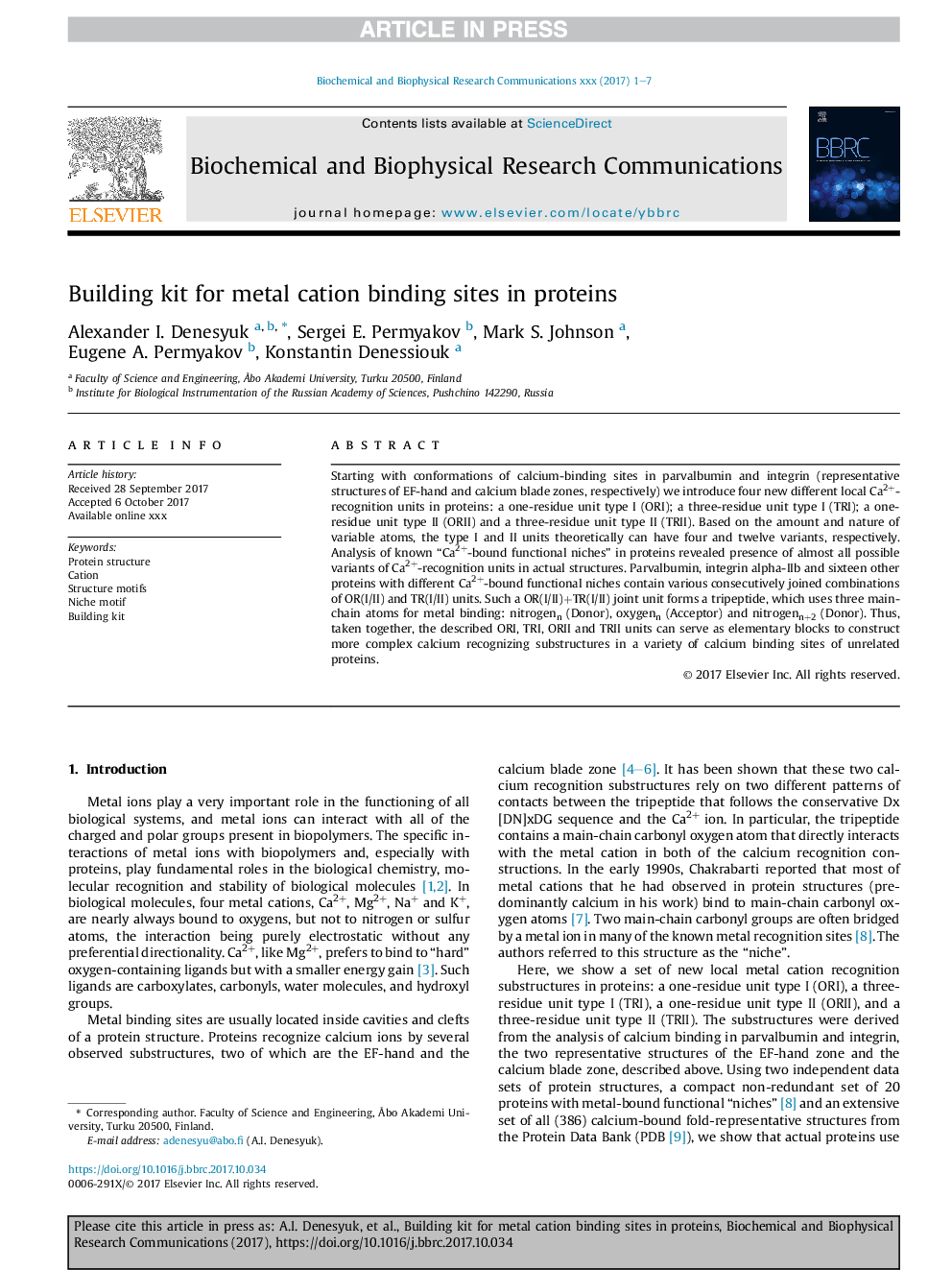| Article ID | Journal | Published Year | Pages | File Type |
|---|---|---|---|---|
| 8296071 | Biochemical and Biophysical Research Communications | 2017 | 7 Pages |
Abstract
Starting with conformations of calcium-binding sites in parvalbumin and integrin (representative structures of EF-hand and calcium blade zones, respectively) we introduce four new different local Ca2+-recognition units in proteins: a one-residue unit type I (ORI); a three-residue unit type I (TRI); a one-residue unit type II (ORII) and a three-residue unit type II (TRII). Based on the amount and nature of variable atoms, the type I and II units theoretically can have four and twelve variants, respectively. Analysis of known “Ca2+-bound functional niches” in proteins revealed presence of almost all possible variants of Ca2+-recognition units in actual structures. Parvalbumin, integrin alpha-IIb and sixteen other proteins with different Ca2+-bound functional niches contain various consecutively joined combinations of OR(I/II) and TR(I/II) units. Such a OR(I/II)+TR(I/II) joint unit forms a tripeptide, which uses three main-chain atoms for metal binding: nitrogenn (Donor), oxygenn (Acceptor) and nitrogenn+2 (Donor). Thus, taken together, the described ORI, TRI, ORII and TRII units can serve as elementary blocks to construct more complex calcium recognizing substructures in a variety of calcium binding sites of unrelated proteins.
Related Topics
Life Sciences
Biochemistry, Genetics and Molecular Biology
Biochemistry
Authors
Alexander I. Denesyuk, Sergei E. Permyakov, Mark S. Johnson, Eugene A. Permyakov, Konstantin Denessiouk,
